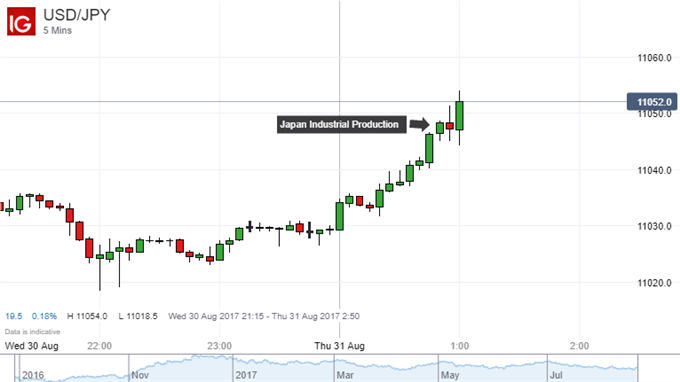Talking Points:
- The Japanese Yen depreciated as July’s industrial production data missed forecasts
- In reality, the disappointing data likely had limited implications for BoJ easing bets
- Rather, the anti-risk currency was following the Nikkei 225 higher in the lead-up
What will drive longer-term FX market trends? See our forecasts here.
The Japanese Yen appeared to show dissatisfaction for some rather disappointing industrial production data. July’s preliminary reading showed that on-year growth slowed to 4.7 percent versus 5.2 percent expected and 5.5 percent in June. In addition, Japan’s industrial production contracted 0.8% m/m. This was larger than the 0.3% decline forecasted and down from 2.2% growth in June.
Even though the data missed expectations, it probably had minimal implications for additional Bank of Japan easing bets. BoJ’s Governor Haruhiko Kuroda underlined the central bank’s main concern, which is how far they are away from their inflation target, when he spoke at the Fed’s annual policy symposium in Jackson Hole last week.
Rather, the Japanese Yen appeared to be focused on risk trends, as Currency Strategist James Stanley warned it would. Even prior to the industrial production data, the anti-risk currency was already at the mercy of the Nikkei 225 as it rallied.





